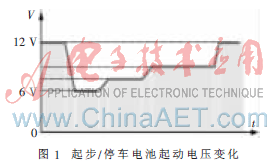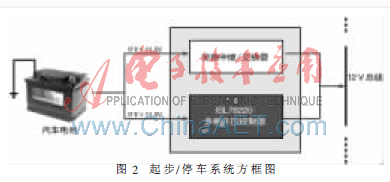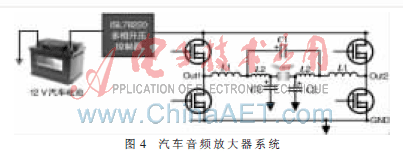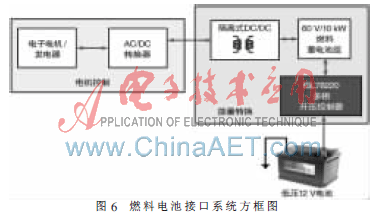At present, automotive industry customers are increasingly demanding the quality and reliability of electronic devices. With the development of the automotive electronics industry, in order to maximize car performance and reduce warranty issues, the quality and reliability of automotive electronic components must be improved.
This article refers to the address: http://
The quality and reliability of electronic components have always been valued, but the development of hybrid vehicles (HEV/PHEV) and electric vehicles has placed new demands on this.
The original gasoline-powered cars use few electronic devices, and component failures can make the car work abnormally, but they can generally be used. For example, to increase engine control, improve engine efficiency, and fuel economy, high-quality, reliable components are required. Because even if one component fails, the engine will stop working.
Currently, cars are almost entirely controlled by electronic devices, and drivers face various risks associated with reliability. In general, when the driver approaches the car and unlocks the passive entry system, the electronic system begins to work. After opening the key door and pressing the button to start the car, a large number of power, analog, and microcontroller circuits begin to control the engine, shifting, and almost every other vehicle system.
At present, most cars use GPS for driver navigation; adaptive cruise control radar maintains safe distance; anti-lock braking system ensures driver's control of the vehicle; when the accident occurs, the airbag is opened; if the driver cannot drive Many cars can use the phone to call rescue (or report location). This requires all electronic devices to be highly reliable in relatively harsh operating environments.
At present, the average power required for automotive electronic control functions is 250 W to 1,500 W. The car or truck boost function and the higher power electronic systems required for in-vehicle entertainment and energy efficiency systems are increasing, so the standard is very important. Since the car battery is an unregulated low-voltage power supply, a high-voltage regulated DC-DC system is required, and in most cases, a step-up DC-DC converter of a multi-phase boost structure is used.
In the case of electric vehicles, the car completely eliminated the mechanical engine and gearbox and replaced it with batteries, motors and high-voltage electronic systems. Although it helps to improve energy efficiency and reduce greenhouse gas emissions, it is based on the addition of electronic circuits. Continuously improving the quality and reliability of electronic components is the only solution when the expected lifespan is extended and the number of electronic components is increased. To a certain extent, this can be achieved by strictly complying with the automotive industry standards that guarantee the highest quality and reliability of various product lines. ISO/TS16949 is the most important standard for driving the development of electronic devices, and has almost become the mandatory standard for the world's leading automotive manufacturers and their component suppliers.
Taking the start-stop function as an example, the start/stop system automatically shuts down and restarts the internal combustion engine, which can shorten the engine idle time and save fuel consumption. This is the most significant advantage for long-term traffic jams that require frequent start-stop parking. During start-up, the battery goes through a process called voltage start-up, which is as low as 6 V, as shown in Figure 1. To protect the electronics connected to the battery bus, the effects of battery-start voltage transients on the bus voltage must be avoided.

The solution to this problem is to add a temporary adjustment multiphase step-up DC-DC converter between the battery and the voltage bus to overcome the instantaneous voltage drop at startup. Figure 2 shows the block diagram of the start/stop system. In this configuration, when the battery voltage is below the 11.5 V threshold, the multiphase step-up DC-DC boosts the battery voltage and provides a stable bus voltage. When the battery voltage is above the 11.5 V limit after the transient change is over, the electronic control unit (ECU) closes the bypass relay or switch and the multiphase boost converter bypasses the system. Intersil's multiphase boost controller, the ISL78220, is compliant with the TS16949 standard and is ideal for start/stop applications due to its ability to detect input voltage variations and high light-load efficiency in phase-cut and frequency-hopping modes.

When the battery starts to return to a steady state after the starting voltage, the multiphase boost converter operates under no load or very light load conditions, and all current is directly supplied by the car battery. To minimize battery power consumption in this situation, the ISL78220 is equipped with enhancements to implement multiple light loads. The automatic addition and subtraction function reduces the number of phases at light loads and optimizes efficiency. At the same time, cycle-by-cycle diode simulation and frequency hopping methods can also be used when the load current is extremely low. In this way, system efficiency can be optimized over the entire load range. Figure 3 shows the efficiency comparison when enabling and disabling light load efficiency enhancement configurations (dephasing, diode emulation, and frequency hopping). It can be seen that system efficiency is significantly improved over a light load range. Using these ISL78220s to increase configuration efficiency can be increased by 10% compared to traditional multiphase boost converters. In addition, the ISL78220 uses a lossless DCR current sensing circuit with no additional losses compared to conventional resistor sensing configurations. At the same time, continuous current information can be transmitted without the need for a sample and hold circuit, so the system has higher accuracy and reliability.

Another application area for automotive multiphase boost converters is the in-vehicle infotainment system, which typically requires a 25 V to 50 V voltage source and supports nearly 800 W peak power. Solutions with multiphase boost controllers are even more streamlined. Dividing the power stage into multiple parallel phases helps to reduce the stress on the power components, speed up load response, and increase system efficiency. Figure 4 shows a typical system configuration for a car audio amplifier system.

There are a number of special requirements for automotive audio amplifier applications. First, when the battery voltage drops due to slow discharge, the audio amplifier output power should be reduced accordingly to keep the battery with enough energy to start the car. The ISL78220 contains a dedicated VREF2 input pin for any analog signal. When the internal reference voltage is below 2 V, the VREF2 pin voltage is used as an internal reference. The ISL78220 also provides a tri-state PWM signal that allows the external driver to simultaneously turn off the upper and lower MOSFETs in the synchronous boost structure, thereby avoiding current flow from the output to the input, which creates an "energy pump" problem in the audio environment.
In hybrid electric vehicle (HEV) and electric vehicle (EV) systems, a 200 V to 400 V high-voltage battery pack is used as an accumulator, and a 12 V conventional battery supports the original system. The high voltage battery pack is charged through an isolated DC-DC. Due to the high fluctuations of the high voltage battery pack, a preregulator is typically inserted between the low voltage battery and the isolated DC-DC converter input to optimize the transformer design. Figure 5 shows a block diagram of the HEV/EV system.

Fuel cell powered electric vehicles require energy storage devices to activate the fuel cell and store the energy captured during regenerative braking. The fuel cell is the main power source, but its power density is low, so the system must integrate an energy storage unit such as a battery to provide the peak power required under transient conditions. Energy storage equipment is suitable for low voltage batteries to maintain compatibility with most current automotive loads, while fuel cell voltages are equivalent to 60 V (10 kW modules on the market). Therefore, a DC-DC converter is required to connect the low-voltage battery to the fuel cell-powered high-voltage DC bus system. Figure 6 shows a block diagram of the fuel cell interface system.

Intersil's ISL78220 is ideal for HEV/EV and fuel cell applications. For battery-powered systems, the most important thing is to monitor the battery charging current. The total output current of the IOUT pin of the ISL78220 is proportional to the total sensed current of all phases (ie, the input current of the multiphase boost converter). As long as the IOUT pin and the VREF2 pin are connected together by simple voltage division and filtering, the total current can be accurately monitored. On the other hand, the ISL78220's dedicated PWM conversion configuration pin gives the system great flexibility. By connecting this pin to VCC or GND, the ISL78220 can be configured as a multiphase boost controller or a multiphase buck controller, respectively. A synchronous boost or buck configuration can be used to carry current in both directions.
In short, with the continuous improvement of power density and output power requirements, automotive power regulation design in the automotive market is facing more severe challenges. The multiphase DC-DC converter architecture simplifies automotive design in many ways. Compared to single-phase mode, multi-phase operation reduces ripple current, helping to reduce EMI and increase efficiency over the entire load range. Intersil's ISL78220 is the industry's first multiphase boost controller designed specifically for automotive start/stop systems, automotive audio systems and HEV/EV/fuel cell systems. By achieving TS16949 certification, Intersil's technology is focused on improving the quality of power management and analog product design, manufacturing and distribution of these systems, and promoting automotive reliability and energy efficiency.
Custom Medical Cable Assemblies
Custom Medical Cable Assemblies,Medical Instrument Sensor Adapter Cable,Ems/Tens Rj45 Snap Ecg Lead Wire,Medical Instrument Cable
Dongguan City Yuanyue Electronics Co.Ltd , https://www.yyeconn.com
